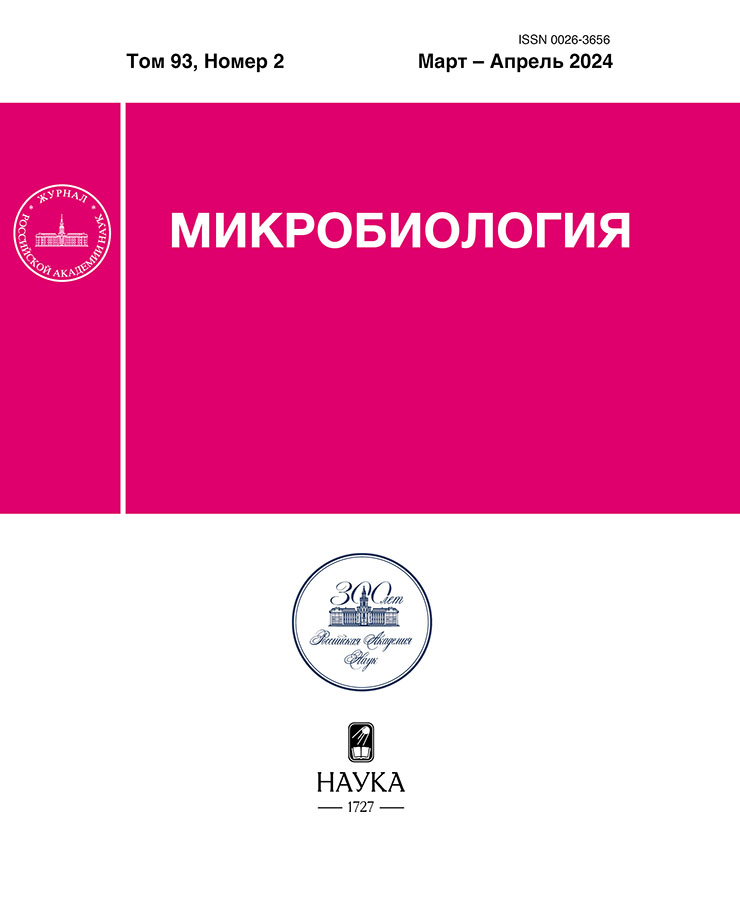Biogeography of Planktonic and Benthic Bacterial Communities of Lake Khubsugul (Mongolia)
- Autores: Belykh O.I.1, Krasnopeev A.Y.1, Sorokovikova E.G.1, Potapov S.A.1, Jadambaa N.1,2, Belykh T.I.3, Tikhonova I.V.1
-
Afiliações:
- Limnological Institute, Siberian Branch, Russian Academy of Sciences
- Institute of Biology, Mongolian Academy of Sciences
- Baikal State University
- Edição: Volume 93, Nº 2 (2024)
- Páginas: 159-163
- Seção: SHORT COMMUNICATIONS
- URL: https://jdigitaldiagnostics.com/0026-3656/article/view/655128
- DOI: https://doi.org/10.31857/S0026365624020117
- ID: 655128
Citar
Texto integral
Resumo
The bacterioplankton of Lake Khubsugl (Hövsgöl) has significant differences from that of large ancient and oligotrophic water bodies. The greatest similarity was noted, however, between the microbiomes of Lake Khubsugul and Lake Baikal, the lakes located in the same rift zone and connected by the river system, which emphasizes the similarity of microbiomes at the regional level. In the global aspect, geographical zonation had the greatest reliable significance in the microbial community biogeography, while depth had the lowest. Trophic status of the lakes, as well as their ancient origin, did not affect the clustering of microbiomes, with the seasonal factor playing the major part at the local and regional levels.
Palavras-chave
Texto integral
Sobre autores
O. Belykh
Limnological Institute, Siberian Branch, Russian Academy of Sciences
Autor responsável pela correspondência
Email: belykh@lin.irk.ru
Rússia, Irkutsk, 664033
A. Krasnopeev
Limnological Institute, Siberian Branch, Russian Academy of Sciences
Email: belykh@lin.irk.ru
Rússia, Irkutsk, 664033
E. Sorokovikova
Limnological Institute, Siberian Branch, Russian Academy of Sciences
Email: belykh@lin.irk.ru
Rússia, Irkutsk, 664033
S. Potapov
Limnological Institute, Siberian Branch, Russian Academy of Sciences
Email: belykh@lin.irk.ru
Rússia, Irkutsk, 664033
N. Jadambaa
Limnological Institute, Siberian Branch, Russian Academy of Sciences; Institute of Biology, Mongolian Academy of Sciences
Email: belykh@lin.irk.ru
Rússia, Irkutsk, 664033; Ulaanbaatar, 13330 Mongolia
T. Belykh
Baikal State University
Email: belykh@lin.irk.ru
Rússia, Irkutsk, 664074
I. Tikhonova
Limnological Institute, Siberian Branch, Russian Academy of Sciences
Email: belykh@lin.irk.ru
Rússia, Irkutsk, 664033
Bibliografia
- Атлас озера Хубсугул / Под ред. Б.А. Богоявленского. М.: ГУГК, 1989. 118 с.
- Румянцев В.А., Драбкова В.Г., Измайлова А.В. Великие озера мира. Санкт-Петербург: Лема, 2012. 370 с.
- Belykh O.I., Sorokovikova E.G., Tomberg I.V., Fedorova G.A., Kuzmin A.V., Krasnopeev A.Y., Suslova M.Y., Potapov S.A., Belykh T.I., Norovsuren J., Galachyants A.D., Tikhonova I.V. Water quality, toxicity and diversity of planktonic and benthic cyanobacteria in pristine ancient Lake Khubsugul (Hövsgöl), Mongolia // Toxins. 2023. V. 15. Art. 213.
- Callbeck C.M., Ehrenfels B., Baumann K.B.L., Wehrli B., Schubert C.J. Anoxic chlorophyll maximum enhances local organic matter remineralization and nitrogen loss in Lake Tanganyika // Nat. Commun. 2021. V. 12. Art. 830.
- Farkas M., Kaszab E., Radó J., Háhn J., Tóth G., Harkai P., Ferincz Á., Lovász Z., Táncsics A., Vörös L., Balázs K., Szoboszlay S. Planktonic and benthic bacterial communities of the largest central european shallow lake, Lake Balaton and its main inflow Zala River // Curr. Microbiol. 2020. V. 77. P. 4016–4028.
- Gevorgyan G., Rinke K., Schultze M., Mamyan A., Kuzmin A., Belykh O., Sorokovikova E., Hayrapetyan A., Hovsepyan A., Khachikyan T., Aghayan S., Fedorova G., Krasnopeev A., Potapov S., Tikhonova I. First report about toxic cyanobacterial bloom occurrence in Lake Sevan, Armenia // Int. Rev. Hydrobiol. 2020. V. 105. № 5–6. P. 131–142.
- Marcondes M.A., Nascimento A., Pessôa R., Victor J.R., Duarte A.J.D.S., Clissa P.B., Sanabani S.S. Characterization of bacterial communities from the surface and adjacent bottom layers of water in the Billings reservoir // Life (Basel). 2022. V. 12. Art. 1280.
- Piontek J., Meeske C., Hassenrück C., Engel A., Jürgens K. Organic matter availability drives the spatial variation in the community composition and activity of Antarctic marine bacterioplankton // Environ. Microbiol. 2022. V. 24. P. 4030–4048.
- R Core Team. R: A Language and Environment for Statistical Computing (R Foundation for Statistical Computing). 2023.
- Salmaso N. Effects of habitat partitioning on the distribution of bacterioplankton in deep lakes // Front. Microbiol. 2019. V. 10. Art. 2257.
- The geology, biodiversity and ecology of Lake Hövsgöl (Mongolia) / Eds Goulden C.E., Sitnikova T.Y., Gelhaus, J., Boldgiv B. Backhuys: Leiden, Netherlands, 2006. 525 р.
- Vipindas P.V., Venkatachalam S., Jabir T., Yang E.J., Cho K.-H., Jung J., Lee Y., Krishnan K.P. Water mass controlled vertical stratification of bacterial and archaeal communities in the Western Arctic Ocean during summer sea-ice melting // Microb. Ecol. 2023. V. 85. P. 1150–1163.
- Wang N., Guo Y., Li G., Xia Y., Ma M., Zang J., Ma Y., Yin X., Han W., Lv J., Cao H. Geochemical-compositional-functional changes in arctic soil microbiomes post land submergence revealed by metagenomics // Microb. Environ. 2019. V. 34. P. 180–190.
Arquivos suplementares











